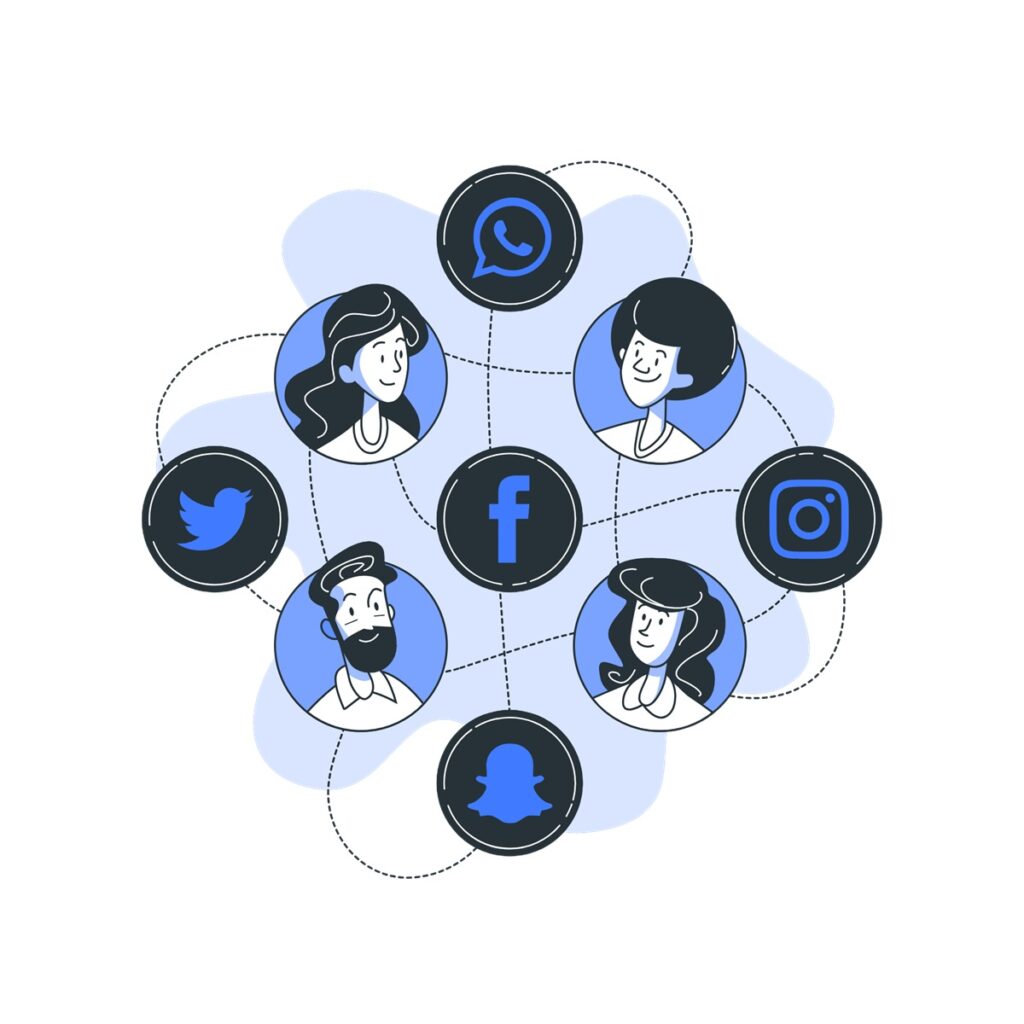Let’s cut the noise. In business, you don’t just sell things. You sell ideas. You sell feelings. And how do you do that? Through communication. It’s the silent handshake, the nod of understanding, the whisper that becomes a roar. Forget the fluffy marketing speak. We’re talking about the raw essence of conveying your message.
Consider this: In a world screaming for attention, 98% of people demand clear communication from businesses. Your brand communication is the bridge. Without it, your brilliant product, your groundbreaking service, sits alone, unloved, unheard. This isn’t optional; it’s a matter of survival. It’s how you move from unknown to unforgettable.
What Is Brand Communication?
It’s simple: Brand communication is your brand’s voice. It’s every word spoken, every image shown, every interaction had. Think beyond the billboard. It’s the tone of your emails, the speed of your customer service, the design of your website, even the feeling you get unboxing a product. Each point is a chance to communicate.
Your brand isn’t just a logo. It’s a personality. And like any personality, it communicates through actions and words. This consistent stream of messages defines your brand’s identity, its values, and its promise. It’s about crafting a narrative, piece by piece, that people can understand, connect with, and ultimately, buy into. It’s the story you tell, every single day, in a million small ways.
Importance of Brand Communication
Why bother? Because good communication isn’t just good manners; it’s good business.
First, it builds trust. In a skeptical world, trust is gold. When your messages are honest, consistent, and clear, people believe you. They feel safe buying from you. That trust translates directly to loyalty. Customers stick with brands they trust. 81% of consumers demand trust before making a purchase. That’s a direct line from communication to revenue.
Second, it carves out your space. The market is a crowded room. Everyone’s shouting. Your communication makes you distinct. It highlights what makes you different, better, and unique. This isn’t about being loud; it’s about being clear. When you stand out, you attract attention. You pull people in.
Finally, it drives growth. Clear communication spreads your name. It amplifies your message. More people know you, more people understand you, more people want what you offer. This isn’t magic; it’s simple cause and effect. Better communication means more eyes, more sales, more impact.
Types of Brand Communication
1. Advertising

This is the paid message. You pay to get your story in front of eyeballs. TV commercials, online banner ads, and print space. You control the narrative, the visuals, and the delivery. It’s a direct, forceful push to a wide audience.
For instance, a new electric vehicle company buys ad slots during prime time. Their goal: flood the market with images of their sleek new car and its zero emissions. Pure advertising.
2. Social Media

This is the conversation platform. Here, brands don’t just broadcast; they interact. Posts, stories, comments, direct messages. It’s less formal, more immediate. It builds communities. Brands listen, respond, and adapt.
A sportswear brand shares user-generated content of people working out in their gear. They respond to comments, answer questions. This builds engagement, not just sales.
3. Public Relations

PR is about reputation management. It’s about getting others to tell your story favorably. Press releases, media events, expert interviews. It’s about influencing perception through third-party endorsement.
When a tech startup lands a feature story in a major business magazine, highlighting their innovative culture and growth, that’s public relations at work. It’s earned media.
4. Direct Marketing

This is the straight shot. No detours. Messages go directly to the consumer. Emails, direct mail, personalized texts. It’s about segmentation and personalization. You tailor the message to the individual.
A niche online bookstore sends out weekly emails recommending new releases based on a customer’s past purchases. That’s direct marketing, personal and pointed.
5. Sales Promotion

These are the temporary boosts. Discounts, coupons, contests, flash sales. The goal is immediate action, a quick spike in sales. They create urgency. It’s about nudging people to buy now.
A local cafe offers a “buy one coffee, get one free” deal for a limited time. This drives foot traffic and quick conversions.
6. Personal Selling

This is the face-to-face interaction. One-on-one. A salesperson directly engages with a potential customer. It’s high-touch, tailored, and relationship-driven. Common in high-value B2B markets or luxury goods.
A financial advisor meets with a client, discussing investment strategies based on their specific goals. This builds deep trust and long-term relationships.
Benefits of Effective Brand Communication
1. Builds Brand Awareness
People can’t buy what they don’t know exists. Strong communication makes your brand visible. It puts your name, your logo, and your unique selling proposition in front of the right people, repeatedly. This means more recognition, more recall, more mindshare.
2. Deepens Customer Loyalty
When communication is clear, consistent, and authentic, it builds a foundation of trust. Customers feel understood, respected, and connected. This emotional bond leads to repeat purchases, positive word-of-mouth, and resistance to competitors. They don’t just buy your product; they buy into your brand.
3. Creates Competitive Advantage
In a sea of sameness, effective communication carves out your distinct identity. It highlights what makes you special, what problems you solve better than anyone else. This clear positioning makes you the obvious choice for your target audience, making competitors seem irrelevant.
4. Improves Brand Reputation
Your brand’s standing is built on every message you send. Positive communication, transparency, and responsiveness contribute to a strong, positive reputation. This isn’t just about avoiding bad press; it’s about actively building respect and admiration in the market.
5. Increases Sales and Revenue
This is the bottom line. When awareness is high, loyalty is strong, and your reputation is solid, sales follow. Clear communication removes friction from the buying process. It convinces, it persuades, it converts. The better you communicate, the more you sell.
How to Create an Effective Brand Communication Plan?
1. Define Your Audience
Who are you talking to? What are their fears, desires, and habits? Don’t guess. Research. Understand their language, their hangouts. If you don’t know who’s listening, your message is just noise in the wind. This audience’s understanding is the bedrock.
2. Set Clear Objectives
What’s the goal? Are there more leads? Higher brand recognition? Better customer retention? Be specific. “Increase brand awareness by 20% in six months.” Vague goals lead to vague results. Clear targets dictate your strategy.
3. Craft Your Core Message
What’s the single most important thing you want people to remember about your brand? Distill it. Make it concise, compelling, and memorable. This is your brand’s North Star. Every piece of communication must align with this core message. It’s your promise.
4. Pick Your Channels
Where does your audience hang out? Are they on TikTok? LinkedIn? Reading specific industry blogs? Go where they are. Don’t waste resources shouting into an empty room. Choose channels that allow your core message to resonate effectively with your defined audience.
5. Be Consistent
Your brand’s voice must be unified. Across every channel, every message, every interaction. Visuals, tone, language – they must all speak the same story. Inconsistency breeds confusion and erodes trust. Consistency builds recognition and strengthens your identity.
6. Measure and Adjust
This isn’t a one-and-done deal. Track your results. Are your messages hitting home? Are you achieving your objectives? Use data to understand what works and what doesn’t. Then, adapt. The market shifts. Your communication must too. Learn, refine, repeat.
Brand Communication Models
These models simplify how messages travel. They show the journey from sender to receiver.
1. Linear Model
This is the simplest. One-way traffic. A sender crafts a message, sends it, and a receiver gets it. No feedback loop. Think of an old radio advertisement. The brand talks, you listen. It’s good for mass broadcasting, but lacks engagement.
2. Interactive Model
This adds a response. The receiver can send feedback. It’s a back-and-forth. Not simultaneous, but sequential. Think of commenting on a brand’s Facebook post, and then the brand replies. There’s a dialogue, but not a live conversation.
3. Transactional Model
This is the dynamic version. Communication is a constant, simultaneous exchange. Both parties are sending and receiving at the same time. Think of a live customer service chat. Ideas flow freely, adapting in real-time. This model reflects most modern interactions.
Best Brand Communication Tools
1. Email Marketing Platforms
Tools like ConvertKit or Constant Contact streamline sending targeted messages. They handle lists, automation, and personalization. They make it easy to nurture leads, announce new products, or send loyalty offers directly to inboxes. They are direct lines to your audience.
2. Social Media Management Tools
Platforms such as Sprout Social or Agorapulse consolidate your social presence. You can schedule posts, monitor mentions, analyze performance, and engage with followers from one dashboard. They make managing multiple social channels efficient and effective.
3. CRM Systems
Customer Relationship Management systems like Salesforce or Zoho CRM store all customer data. They track interactions, purchase history, and preferences. This intelligence allows for highly personalized communication, improving service and sales effectiveness. Knowing your customer is power.
4. Project Management Software
Tools like Monday.com or ClickUp are crucial for internal communication. They keep teams aligned, tasks organized, and deadlines clear. When internal communication flows smoothly, it directly impacts the quality and consistency of your external brand messages. Internal harmony drives external clarity.
5. Analytics Platforms
Google Analytics, or similar tools, track website traffic and user behavior. Understanding how people interact with your online presence provides data-driven insights into the effectiveness of your digital communication efforts. What gets measured gets managed.
Examples of Brand Communication
1. Patagonia: Environmental Activism
Patagonia doesn’t just sell outdoor gear; they sell a commitment to the planet. Their communication consistently highlights environmental issues, sustainable practices, and advocacy. They even run campaigns telling people not to buy their jackets, pushing for repair and reuse. This deep commitment resonates with their audience, building extreme loyalty.
2. Red Bull: Experience Marketing
Red Bull doesn’t advertise its drink; it advertises extreme sports, music festivals, and daring feats. Their communication focuses on the feeling of excitement, adventure, and pushing limits. They own media properties that create content around these themes, making their brand synonymous with high-octane experiences.
3. Airbnb: Belong Anywhere
Airbnb’s communication centers on community, travel, and unique experiences. Their ads show diverse people connecting through stays, highlighting local culture and personal connections. They sell the idea of belonging, rather than just a place to sleep. This emotionally resonant message sets them apart from traditional hotels.
4. Slack: “Where Work Happens”
Slack’s communication focuses on simplicity, collaboration, and efficiency. Their ads are clean, their messaging direct, and they emphasize how their platform makes teamwork easier. They sell a solution to communication chaos, positioning themselves as the essential tool for modern work.
Conclusion
Brand communication isn’t optional; it’s the engine. In a world shouting for attention, your brand’s voice cuts through the noise. It’s every touchpoint, every message, every interaction.
Think of it: your logo, a tweet, customer service. All these things speak for your brand. They build trust. They make you stand out. Ignore this, and you’re just another brick in the wall. Get it right, and you build a connection that turns strangers into loyal fans, driving sales and making your brand stick.
This isn’t about fancy ads or fluffy jargon. It’s about clarity, consistency, and impact. You define your audience, set clear goals, and craft a simple, powerful message. Then you put it everywhere your audience lives. You measure what works, you ditch what doesn’t. This isn’t just marketing; it’s the core of how you exist in the market.
Master brand communication, and you don’t just sell things; you build an empire. Fail to, and you’re just another voice, quickly forgotten.
